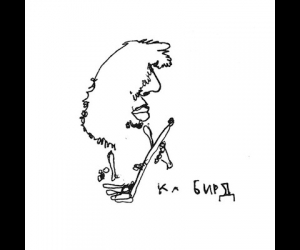Since 2013,
trumpeter Lina Allemano has been dividing her time evenly between two cities, maintaining her eponymous quartet and developing other initiatives in Toronto, while studying extended techniques and expanding her musical impulses across a broad range of improvisatory ensembles in Berlin. While the Berlin experiences clearly mark recent Toronto enterprises like the Titanium Riot quartet and the duo Bloop, two new CDs present broader views of how her German residence is shaping Allemano’s work.
Formed in 2017, Ohrenschmaus (“ear feast”) is Allemano’s Berlin trio with Norwegian bassist Dan Peter Sundland and German drummer Michael Griener. Allemano’s compositions are tailored to the group’s highly improvisatory character: they favour strong sonic identities— whether clarion blasts, whispers, or combinations thereof, and their phrases open outward, pressing toward form rather than defining it, or conversely breaking free of it. The opening “Year of the Eye” begins as a strikingly insistent, brassy declaration. If Allemano often resides at the introspective end of the trumpet’s range, here she suggests the glittering, extroverted virtuosity of Freddie Hubbard, an early influence, before embarking on an inventive dialogue with Sundland and Griener, each phrase suggesting a different direction. “Geröstet Peanut” is highlighted by Allemano’s interaction with Griener’s dense, rattling drumming, while “Ostsee” celebrates a creative instability that can move from a reflective, formal lyricism to a dynamic rhythmic sputtering. On “Rats and Mice and Everything Nice” the music drops to a whisper, while the concluding “Hooray Norway” subtly merges the sounds of trumpet and bass.
Glimmer Glammer is Allemano’s first solo recording, and takes the challenge beyond technique towards fully realized music. “Portrait of Sticks” is an essay in identity, initially reducing content to almost rudimentary phrases, near-bugle calls, then gradually altering them, developing subtle rhythmic inflections that shift the terrain to jazz and beyond. The works that follow are complex, sometimes multiple, explorations of secret voices. “Clamour” employs both circular breathing and multiphonics to create continuous sound and distinct events, evoking an interiority that belongs at once to trumpet and trumpeter. “Buchfink” celebrates tradition and innovation, linking the sound of a Harmon mute with rapid, sometimes fluttering phrasing and occasional multiphonics in a way that conjoins the contrasting jazz traditions of Miles Davis and John Coltrane. The final “One Man Down,” commemorating Allemano’s friend, the late Justin Haynes, returns to the primary materials signalled at the CD’s beginnings and achieves a singular transition, an open horn phrase that’s subtly transmuted with the addition of a mute—as moving a transformation as one will likely ever hear.
What stands out in these recordings is Allemano’s simultaneous commitment to both clarity and exploration—less a balancing act than a defining quality, an insistent presence of mind and spirit.




